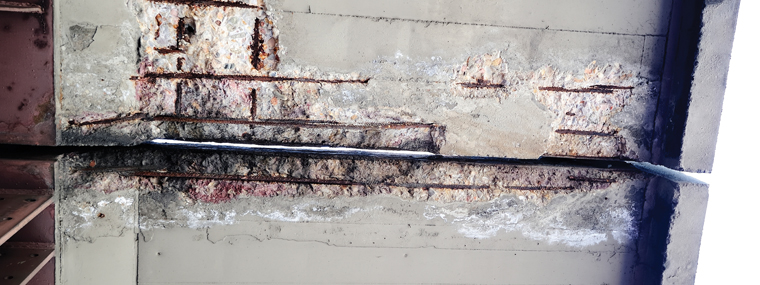
Is Your Association Ready for the New Construction Defect Pre-Suit Process?
By David B. Haber and Franchesco Soto / Published May 2016

Prior to filing a residential or commercial construction and design defect lawsuit, claimants are required to comply with the requirements of Chapter 558, Florida Statutes (“Chapter 558”).
Chapter 558 was originally enacted as a means to provide both the residential and/or commercial owners along with the parties who actually completed the construction with an opportunity to resolve their construction defect claims prior to incurring the expenses associated with litigation. Indeed, the Legislative Findings and Declarations section of Chapter 558 (558.001) states that “[t]he Legislature finds that it is beneficial to have an alternative method to resolve construction disputes that would reduce the need for litigation as well as protect the rights of property owners.” However, while the intent of Chapter 558 was to resolve pre-suit construction defect claims, in practicality, it generally just burdens the claimants’ ability to pursue their construction defect claims while at the same time providing no real consequences to the non-compliant construction defendants. It is unfortunate that while it was intended to help owners and prospective construction defendants in trying to resolve their differences out of court, the reality is that the Chapter 558 process, in most cases—especially in high-rise condominium construction projects—is an arduous process which slows down owners from pursuing their remedies.
Recently, House Bill 87 was signed into law by Governor Rick Scott on June 16, 2015, effectively placing an even higher burden on claimants asserting construction defect lawsuits. Chapter 558 now effectively requires residential and/or commercial owners to incur substantial monetary expenditures on engineering fees, the fees associated with gathering and producing large volumes of documents, and the burden of identifying with finite precision the location of each and every potential defect affecting the subject property—a task that in practicality is oftentimes difficult if not impossible to accomplish at a pre-suit stage. Moreover, the residential and commercial property owners are required to not only notify the developer, contractor, subcontractors, and design professionals of the claimed defects and an opportunity to inspect and settle the claims, but now the claimants are further required to include the construction defendant’s respective insurers in the process—most of which are not likely to be known by the claimant at the pre-suit stage. As detailed above, the new Chapter 558 requires that in serving the 558 Notice to the construction parties, each and every defect must be identified by a specific location within the property along with the damages and/or loss occasioned as a result of the defect. In particular, Section 558.004, F.S. states:
558.004 Notice and opportunity to repair.—
b) The notice of claim must describe in reasonable detail the nature of each alleged construction defect and, if known, the damage or loss resulting from the defect. Based upon at least a visual inspection by the claimant or its agents, the notice of claim must identify the location of each alleged construction defect sufficiently to enable the responding parties to locate the alleged defect without undue burden. The claimant has no obligation to perform destructive or other testing for purposes of this notice.
While Chapter 558 is silent on the remedies available in the event that these new requirements regarding identification of defects is not complied with, it is, however, likely that savvy construction defense counsel will utilize the ambiguity in Chapter 558 to delay the claimants’ ability to proceed with their construction defect lawsuit in hopes of requiring the claimants to incur additional engineering and attorneys’ fees at the pre-suit stage. It is important to note that while Chapter 558 does not require the claimant to conduct destructive testing in order to identify each of the defects and their respective locations, the question remains on how could a claimant indeed comply with the requirements of Chapter 558.004 without, in fact, incurring the additional expense of conducting destructive testing? In addition, what will prevent the defense counsel from forcing claimants to expend large sums of money in identifying each and every specific location of the defects, at the pre-suit stage, in hopes of forcing the claimants to either settle at unfavorable terms or abandon their claims altogether because of the financial burden caused by these requirements?
While advocates of the changes to Chapter 558 argue that requiring more specificity in Chapter 558 Notices shall provide recipients with more information about the construction defects, it is clear that on the flip side, the requirements of Chapter 558 are intended to have a chilling effect on claimants that have been aggrieved by poor construction practices by making the pre-suit process all the more costly for the claimants who have already been harmed by the resulting defects left at their respective properties.
In summary, residential and/or commercial property owners must be well aware of the new requirements imposed by the 2015 amendments to Chapter 558, Florida Statutes, which, as discussed above, are geared to benefit the developers, contractors, subcontractors, and design professionals; and if not properly followed, it could result in the claimants incurring substantial fees at the pre-suit stage and impact their ability to prosecute their claims.
The practical reality of the amendment is that developers and other construction parties (contractors, subcontractors, architects, and engineers) now have yet another weapon to cause even more expense and delay to owners in this Chapter 558 process.
David B. Haber
Founder, Haber Slade, P.A.
David B. Haber is the founding partner of Haber Slade, P.A. He is a commercial litigator with 29 years of experience who has handled multiple complex commercial disputes throughout Florida, including condominium and homeowner association disputes. He can be reached at dhaber@dhaberlaw.com.
Franchesco Soto
Partner, Haber Slade, P.A.
Franchesco Soto is a partner with the firm. He can be reached at fsoto@dhaberlaw.com. Haber Slade, P.A. is located on the Internet at www.haberslade.com and can be reached at (305) 379-2400.



